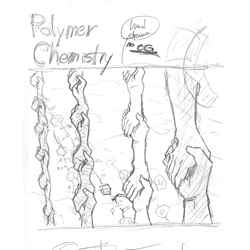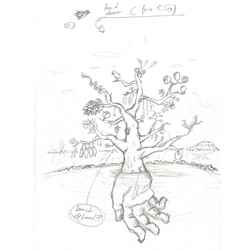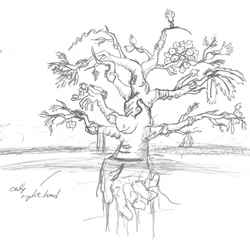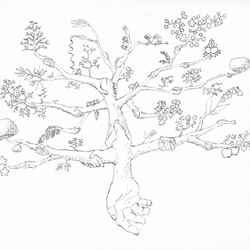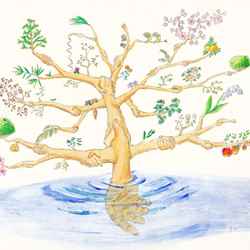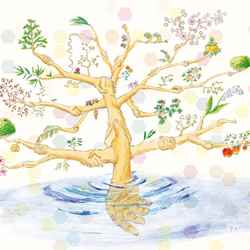Tree of life
Under the covers
Naoya Kanbayashi, from Osaka University, and PhD student Yuki Katoaka discuss their beautiful cover in Polymer Chemistry, and the branching chiral polymer chains that inspired it.
Naoya: In chemistry, a chiral carbon is a carbon atom that is attached to four different types of atom. Taken as part of a whole molecule, this means you can get two stereoisomers: molecules that are structurally identical but are mirror images of each other.
A compound that contains chiral molecules is also optically active – meaning it can rotate plane-polarised light to the right or left.
Recently we made optically active polymers composed of chiral carbons that produced only one stereoisomer. These polymers are expected to have a range of applications in the future – such as catalysis or molecular recognition.
In this paper we have started with a chiral 'parent polymer' and modified its side-chains in various ways. This method should contribute to the development of more tailor-made structures.
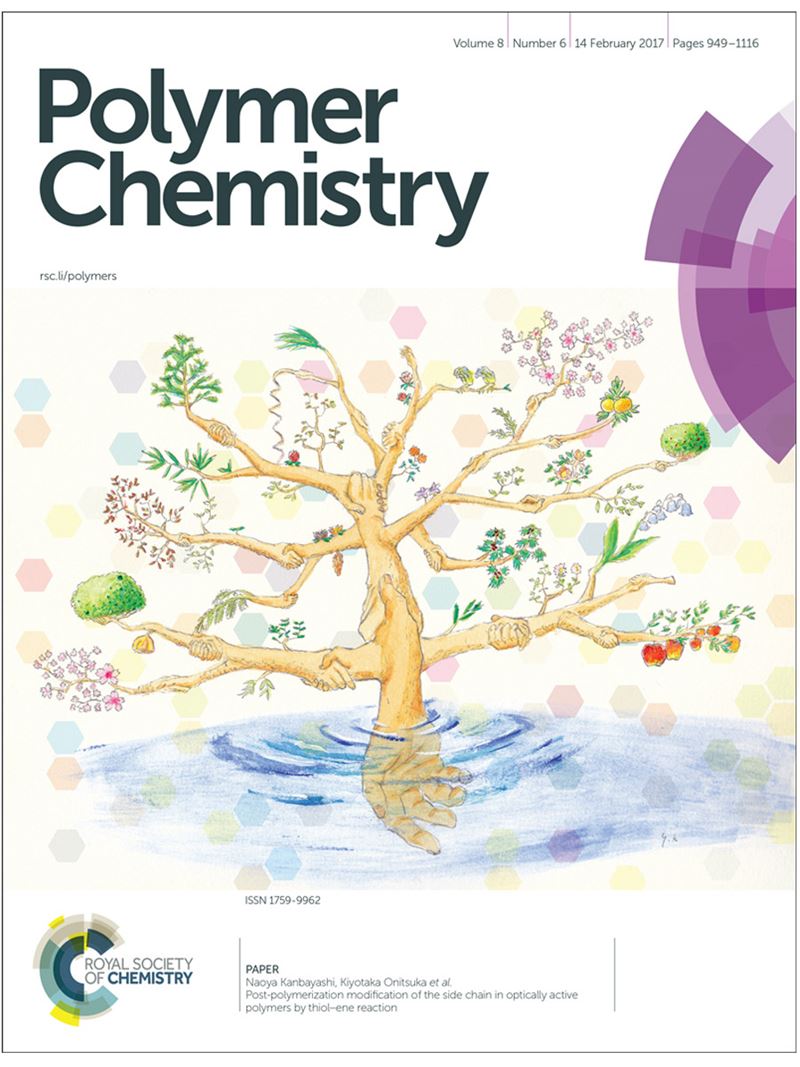
From the art desk
Yuki: It may look to some people like this picture is an abstract painting, but that would be a mistake. It is in fact based on a concrete image: an optically active polymer with various side chains.
The most familiar chiral object is our hands, so the first thing that came to mind was an image of hands connected in an infinite chain.
At the same time I was thinking about the theme of side-chains and branching, and so I drew a tree.
I asked the author which picture he preferred, and to my surprise he suggested mixing the two. I tried it and my first draft was horrible! However after careful drawing and soft colouring, the artwork was finally completed.
I would like to continue creating art like this, at the same time as being a chemist.
Read the article: Naoya Kanbayashi et al, Polym. Chem., 2017, DOI: 10.1039/C6PY01946C
This image appears on the front cover of Polymer Chemistry, 2017, Issue 6.
Press office
- Tel:
- +44 (0) 20 7440 3351
- Email:
- Send us an email


